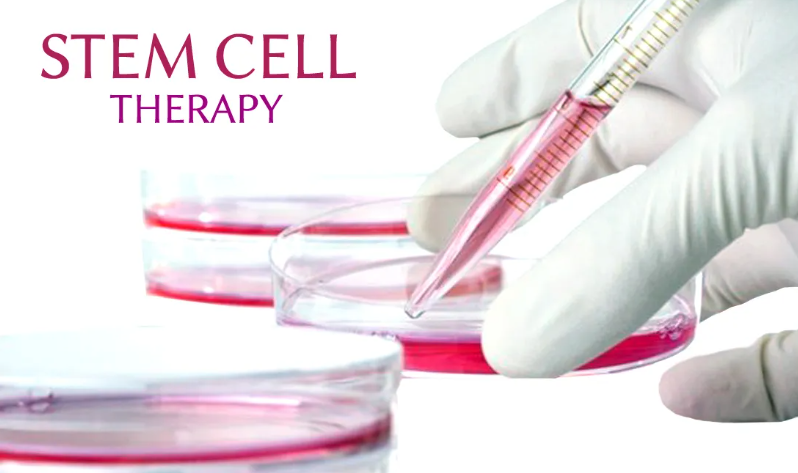Stem cells are the body’s master builders, able to transform into bone, muscle, nerve, or cartilage when signaled by injury or disease. Researchers isolate them from bone marrow, fat tissue, or donated umbilical cord blood, then reinject or infuse them where repair is needed. Unlike drugs that simply manage symptoms, stem cells aim to restart natural healing, positioning regenerative medicine as a frontier that blends biology’s raw potential with clinical precision.
Pathways to Healing: How Cells Repair Tissue
Once delivered, stem cells home to damaged sites, release anti-inflammatory proteins, and secrete growth factors that coax surrounding cells to divide and rebuild. They can also differentiate directly into replacement tissue, restoring structure and function. This dual action—messenger and builder—helps explain why patients with tendon tears, spinal disc degeneration, or autoimmune flare-ups often report pain relief and improved mobility within months rather than years.
Medical Conditions Seeing the Most Promise
Orthopedic issues like osteoarthritis, rotator-cuff injuries, and meniscal tears top the list, closely followed by diabetic foot ulcers, ischemic heart disease, and certain neuro-degenerative disorders such as multiple sclerosis. Early clinical trials also hint at benefits for inflammatory bowel disease and liver cirrhosis. While research is advancing quickly, some indications remain experimental, so verifying whether a treatment is within accepted guidelines is crucial before committing time and money.
Assessing Candidacy: Who Stands to Gain?
Ideal candidates are generally younger to middle-aged adults with early- or mid-stage damage who wish to avoid or delay invasive surgery. Overall health, absence of active infection, and realistic expectations matter just as much as the condition being treated. People with advanced joint collapse or poorly controlled cancer typically see limited benefit, and those on heavy immunosuppressants may need extra precautions to ensure cells can thrive and do their work.
Potential Benefits Worth Highlighting
Patients are drawn to stem cell therapy because procedures are usually outpatient, require only local anesthesia, and leverage the body’s own biology, reducing rejection risk. Commonly reported perks include reduced pain, faster functional recovery, and lower dependence on long-term medication. In orthopedic settings, regenerated cartilage may postpone knee or hip replacement by several years, translating into lower overall healthcare costs and less downtime.
Risks, Ethics, and Regulatory Landscape
Every medical intervention carries risks: infection, bleeding, allergic reaction to anesthetic, and, rarely, ineffective or abnormal tissue growth. Regulatory agencies in the United States, Europe, and India allow certain autologous (self-derived) stem cell uses but restrict unproven, off-label applications. Ethically sourced adult stem cells avoid the controversies linked to embryonic lines, yet patients should still verify that a clinic follows Good Manufacturing Practices and uses lab facilities approved by relevant health authorities.
Comparing Stem Cell Sources and Types
Mesenchymal stem cells (MSCs) from bone marrow or adipose tissue dominate clinical practice thanks to strong anti-inflammatory traits. Umbilical cord–derived cells are allogenic (donor), youthful, and plentiful but require rigorous screening. Hematopoietic stem cells treat blood cancers and immune deficiencies, while induced pluripotent stem cells remain largely research-stage. Understanding these distinctions helps patients judge claims about “superior” cell types and identify red flags in marketing materials.
Step-by-Step Look at the Procedure
Typical therapy begins with imaging and lab tests, followed by a short harvest procedure—liposuction for fat or needle aspiration for marrow—lasting 30-60 minutes. Cells are processed in a sterile lab, concentrated, and reinjected under ultrasound or fluoroscopic guidance into the injured site the same day. Most people walk out of the clinic within hours, with only a compression bandage or small dressing marking the harvest area.
Recovery Timeline and Post-Treatment Care
Expect mild soreness for two to three days and temporary activity restrictions lasting one to two weeks. Improvements often surface between the fourth and twelfth week as inflammation subsides and new tissue forms. Physicians may pair therapy with structured physiotherapy or low-impact exercise to strengthen surrounding muscles and maximize joint stability. Regular follow-up imaging tracks progress and guides decisions on booster injections if recommended.
Setting Realistic Expectations and Outcomes
Success rates vary widely: studies show 60- to 80-percent patient-reported pain reduction in early knee arthritis but lower figures in severe bone-on-bone cases. Stem cells are not a magic bullet; their job is to enhance, not replace, careful lifestyle management, weight control, and, when necessary, conventional medicine. Discussing personal goals openly with your provider helps align hoped-for outcomes with statistically likely results.
Costs, Coverage, and Financial Planning
In India, single-joint orthopedic treatments range from ₹1 lakh to ₹3 lakh, while cardiac or systemic infusions can exceed ₹5 lakh due to higher cell counts and hospital stays. Because insurers label many uses as investigational, out-of-pocket payment is common. Ask for an itemized quote, confirm lab fees, and explore zero-interest financing or medical credit lines if needed. Budgeting for potential second injections six to twelve months later is wise.
Key Questions for Your Provider
Before signing consent forms, inquire about the clinician’s training, published success metrics, cell source and processing method, sterility safeguards, and post-procedure support. Verify that imaging guidance is available during injections and that emergency protocols are in place. Finally, ask for contact information of past patients willing to share experiences; firsthand accounts often reveal practical insights that glossy brochures overlook. Informed questioning is your best defense against hype and your first step toward genuine healing.

